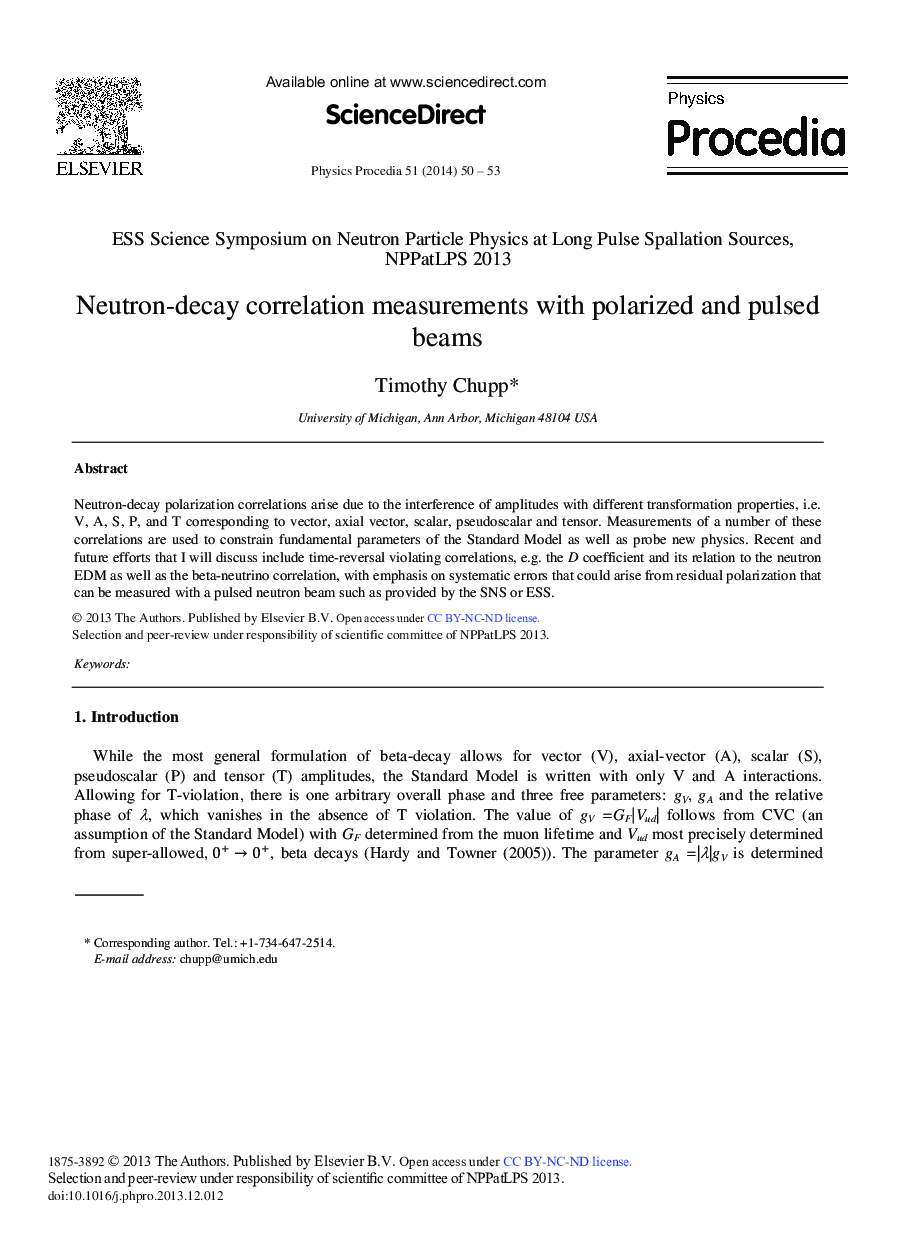| Article ID | Journal | Published Year | Pages | File Type |
|---|---|---|---|---|
| 1873276 | Physics Procedia | 2014 | 4 Pages |
Abstract
Neutron-decay polarization correlations arise due to the interference of amplitudes with different transformation properties, i.e. V, A, S, P, and T corresponding to vector, axial vector, scalar, pseudoscalar and tensor. Measurements of a number of these correlations are used to constrain fundamental parameters of the Standard Model as well as probe new physics. Recent and future efforts that I will discuss include time-reversal violating correlations, e.g. the D coefficient and its relation to the neutron EDM as well as the beta-neutrino correlation, with emphasis on systematic errors that could arise from residual polarization that can be measured with a pulsed neutron beam such as provided by the SNS or ESS.
Related Topics
Physical Sciences and Engineering
Physics and Astronomy
Physics and Astronomy (General)
